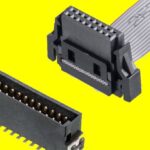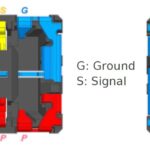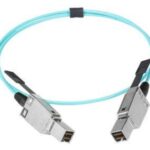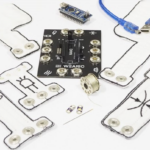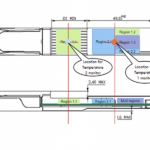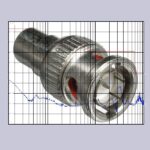Space constraints that characterize electric vehicle systems put special demands on connectors that must handle high power and rising data rates. Giorgio Potenza • Harwin There are six main systems directly associated with an electric vehicle (EV) powertrain. They consist of the onboard charger (OBC), the battery pack, the battery management system (BMS) that monitors […]
faq
How are RF connectors shrinking for mmWave systems?
RF connectors for mmWave are shrinking to accommodate higher performance and higher densities in 5G communication networks and devices. This FAQ begins by looking at today’s 4.3-10 coaxial connectors, which were developed to solve the performance issues inherent to the previous 7-16 connectors. It then examines how the technologies unveiled in the 4.3-10 are further […]
Where are miniature connectors for wearables headed?
Miniature connectors for wearables continue to shrink, and they are increasing in performance, carrying higher bandwidth signals and more power. Wearables add functionality, resulting in more components and interconnects in the same size package. Applications range from smartwatches and health monitoring devices to augmented reality/virtual reality (AR/VR) devices, as well as medical and military systems. […]
How are optical interconnects being miniaturized?
Fiber optic connector trends include a proliferation of new and smaller designs and, according to NTT, optical connector standardization activities are one of the most active areas at the International Electrotechnical Commission (IEC). As of February 2021, IEC SC 86B (Fibre optic interconnecting devices and passive components) published the second largest number of documents in […]
What connectors are there for woven electronics & e-textiles?
Woven electronics and electronic textiles (e-textiles) are emerging areas of technology. E-textiles are being developed that can monitor physiological conditions, deliver medical treatments, or be used as human machine interfaces (HMIs). Maintaining reliable connections between electronic devices embedded into clothing or other soft materials is challenging. There are issues related to washability and durability, in […]
What’s different about space-rated connectors?
Space-grade connectors are generally spin-offs of military-grade designs. Compared with common commercial connectors, there’s a much smaller variety of space-grade connectors. However, commercial off-the-shelf (COTS) and COTS+ connectors are increasingly used in cost-sensitive missions such as CubeSats. This FAQ begins with a look at the unique operating conditions in space and how those conditions impact […]
How QSFP-DD and OSFP Loopback modules are supporting multiple IO interfaces
IO Loopbacks connect digital data streams to their source without purposeful processing or modification. This serves as a diagnostic test for a device and other nodes in the network infrastructure. The return signal is compared with the transmitted signal. For several generations of electronic equipment, using a short cable assembly, molded very-high-density cable interconnect (VHDCI), […]
What is the common impedance of a twisted pair?
Understanding impedance in twisted-pair cables help you avoid signal problems.
The connector is often the EMI problem
It only takes 3µA of current to fail an EMC test, and a connector can produce that much.
Four types of connectors for robots and drones
Many power and signal connectors are used in robot and drone sub-systems, such as sensors, motion, high-speed wired and wireless communications, and more. As industry 4.0 continues to unfold, more robots and more types of robots are being found in factories, warehouses, and other facilities to increase quality and efficiencies and reduce costs. Robots and […]

